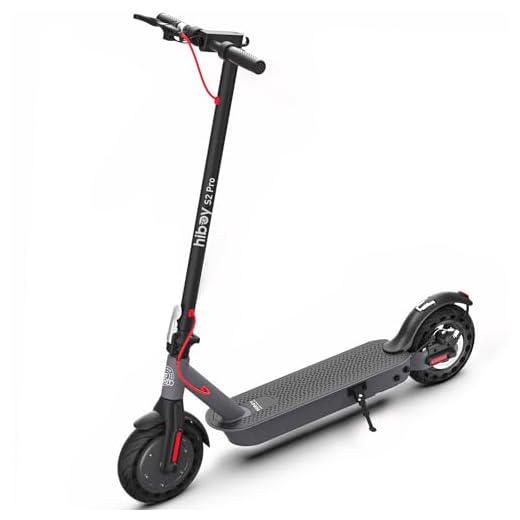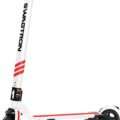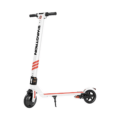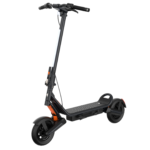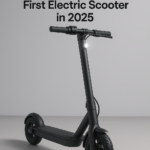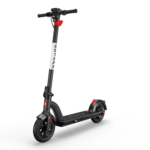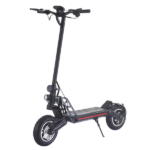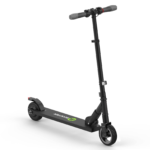- Home
- Scooters
- Compare Scooters
- Xiaomi 4 Pro vs Hiboy S2 Pro – Budget-Friendly Commuter Showdown
Xiaomi 4 Pro vs Hiboy S2 Pro – Budget-Friendly Commuter Showdown
The Xiaomi Electric Scooter 4 Pro and the Hiboy S2 Pro are among the most popular budget-friendly commuters. Although both aim to deliver dependable daily transport at a reasonable price, they take different paths. The Xiaomi 4 Pro leans into build quality, app polish, and a refined ride, while the Hiboy S2 Pro focuses on straight-line value: punchy acceleration for the money, simple controls, and easy ownership. Consequently, choosing the right one comes down to your route, priorities, and how often you need to carry the scooter.
In this comparison, you’ll find a clear breakdown of design, comfort, performance, range, braking, portability, features, upkeep, and best use cases. By the end, you’ll know exactly which model fits your commute and budget.
Key Takeaways
- Ride feel vs. raw value: The Xiaomi 4 Pro rides more smoothly and feels more premium; the Hiboy S2 Pro punches above its price in straight-line acceleration and simplicity.
- Range & battery: Xiaomi typically offers ~55–60 km claimed range; Hiboy S2 Pro lists up to ~40–45 km. In practice, rider weight, terrain, and temperature matter; nevertheless, Xiaomi usually goes farther per charge.
- Comfort: Xiaomi’s 10″ tubeless self-sealing tires and geometry absorb chatter better. Meanwhile, the Hiboy’s 10″ solid tires dodge flats but ride firmer on rough pavement.
- Portability: Hiboy S2 Pro is lighter on the wallet; however, Xiaomi 4 Pro is often easier to live with long term thanks to app support and spares availability.
- Hills & speed: Both top out around 25 km/h where limited. Even so, the Hiboy’s throttle response feels snappier out of the box; Xiaomi counters with steadier torque and better stability at speed.
- Best for smooth bike lanes: Xiaomi 4 Pro. Best for short, flat, value-first hops: Hiboy S2 Pro.
Quick Specs Overview
Xiaomi Electric Scooter 4 Pro
- Top Speed: 25 km/h (region-limited)
- Claimed Range: 55–60 km (version dependent)
- Tires: 10″ tubeless self-sealing “DuraGel”
- Motor: ~400 W rated (up to ~700 W peak on earlier version)
- Weight: ~19 kg (2nd Gen similar)
- Brakes: Front E-ABS + rear disc (with recovery)
- App: Mi Home / Xiaomi Home (modes, lock, updates, ride data)
Hiboy S2 Pro
- Top Speed: ~25–30 km/h (varies by market/setting; check local rules)
- Claimed Range: ~40–45 km
- Tires: 10″ solid (no flats)
- Motor: ~350–500 W nominal (higher peak bursts)
- Weight: ~16–17 kg
- Brakes: Rear disc + electronic brake
- App: Hiboy app (lock, settings, basic stats)
Note: Specs vary by region and model year. Therefore, verify the SKU in your country before buying.
Design & Build Quality
Xiaomi 4 Pro – Minimalist, Refined, and Quiet
Xiaomi sticks to a clean silhouette and premium finishing. Because the cockpit is uncluttered and the cables are routed tidily, the scooter looks sleek and feels cohesive. In addition, the deck gives solid foot room, and the latch mechanism is confidence-inspiring. Over time, the tighter tolerances help reduce squeaks and rattles, which makes daily riding feel calm and composed.
Hiboy S2 Pro – Simple, Sturdy, and Value-Focused
The S2 Pro aims for sturdy practicality. While the frame finish isn’t as plush as Xiaomi’s, it is robust and easy to wipe down. Moreover, the overall design favors straightforward maintenance, and the parts cost less in many regions. As a result, new riders who worry about scuffs or a first tumble won’t stress as much about cosmetics.
Verdict: If you prioritize a premium feel and quiet construction, Xiaomi wins. Conversely, if you want a durable frame that’s inexpensive to own, Hiboy delivers.
Comfort & Ride Quality
Xiaomi 4 Pro – Tubeless Tires, Smoother Chassis
Xiaomi’s 10″ tubeless self-sealing tires soak up small cracks and brick seams better than most budget options. Because there’s more pneumatic compliance, the scooter feels planted at 25 km/h, especially in crosswinds and on imperfect bike lanes. Furthermore, the geometry—deck height, stem angle, wheelbase—encourages a relaxed stance.
Hiboy S2 Pro – Solid Tires, Firmer Feel
Hiboy’s 10″ solid tires eliminate punctures, which is great for worry-free commuting. However, they transmit more road texture to your hands and knees. Even though the firmer ride can feel sporty on smooth paths, it becomes chattery on worn asphalt and expansion joints.
Verdict: For comfort on mixed surfaces, Xiaomi has the edge. For riders who fear flats and prefer a direct, low-maintenance feel, Hiboy makes sense.
Performance: Speed, Acceleration & Hills
Xiaomi 4 Pro – Predictable and Confident
Although the Xiaomi 4 Pro is limited to around 25 km/h in many regions, its acceleration curve is smooth. Therefore, it’s easy to modulate in crowded bike lanes and at intersections. On rolling hills, torque delivery remains steady, and the scooter holds speed better once you’re already moving.
Hiboy S2 Pro – Snappy for the Money
The S2 Pro’s throttle response feels eager from a standstill. Consequently, it can jump to cruising speed quickly on flat terrain. Nevertheless, on longer inclines, speed drops earlier than on the Xiaomi due to motor tuning and battery capacity. As always, rider weight and ambient temperature matter.
Verdict: If you want predictable, confidence-inspiring power delivery, Xiaomi is safer. If you want a zippy feel off the line on short, flat hops, Hiboy is gratifying.
Range & Battery Life
Xiaomi 4 Pro – Longer Legs
Under comparable conditions, Xiaomi tends to travel farther per charge. In addition, the battery management system and energy recovery help stretch range when you coast downhill or brake progressively. For commuters with 20–30 km daily loops, fewer charges per week reduce wear on the pack and charger.
Hiboy S2 Pro – Enough for Short City Loops
The S2 Pro’s claimed range suits short-to-medium errands, especially on flat routes at moderate speeds. Because the pack is smaller, full charges take less time. Even so, expect more frequent top-ups if you’re heavy, ride fast, or tackle hills often.
Verdict: Range worriers should choose Xiaomi. Budget riders with short commutes will be fine on Hiboy.
Braking & Safety
Both scooters combine mechanical braking with electronic assistance. Xiaomi pairs front electronic braking (E-ABS) with a rear disc, while Hiboy uses a rear disc plus an electronic brake. As a result, each can stop quickly when maintained correctly. However, Xiaomi’s larger pneumatic tires and calmer chassis help you stay composed during panic stops on uneven surfaces. Meanwhile, Hiboy’s solid tires remove puncture anxiety and keep rotation consistent, but they provide less bump absorption at the limit.
Portability & Storage
Xiaomi 4 Pro – Heavier but Balanced
At roughly 19 kg, the Xiaomi isn’t featherlight. Nevertheless, the fold is compact, the stem is comfortable to hold, and the weight distribution is balanced for stair carries. If you lift it occasionally and store it at home or under a desk, you’ll adapt quickly.
Hiboy S2 Pro – Light Enough, Easy to Handle
Because the S2 Pro often weighs a few kilos less than Xiaomi, it feels easier to pick up. Moreover, the folding latch is quick, which helps when you hop between buses and trains. Even though the handlebar shape is basic, it’s fine for short carries.
Verdict: If you climb multiple floors daily, Hiboy’s lighter mass helps. If you carry occasionally and want a balanced feel, Xiaomi remains manageable.
Dashboard, App & Smart Features
Xiaomi 4 Pro – Mature Software Experience
Xiaomi’s app integration is polished. You can change modes, view trip data, lock the motor, and install firmware updates. Additionally, the on-bar display is bright and readable in daylight. Over time, the ecosystem benefits from a larger global user base, which means more guides, tips, and accessory options.
Hiboy S2 Pro – Essentials Covered
Hiboy’s app provides locking and basic telemetry plus a simple interface for speed modes. Although it’s not as deep as Xiaomi’s platform, it gets the job done. For riders who want “set and forget,” the simplicity is welcome.
Maintenance, Tires & Ownership
Owning a commuter scooter is easier when the daily hassles are small. Xiaomi’s tubeless self-sealing tires reduce puncture downtime, yet they still require correct pressure and periodic checks. Conversely, Hiboy’s solid tires shrug off nails and glass, which is fantastic if your lanes are debris-prone. However, the tradeoff is a firmer ride and less grip on washboard surfaces. In either case, tightening fasteners, cleaning rotors, and maintaining correct tire pressure (or verifying solid tire condition) will keep braking strong and range consistent.
Use Cases: Which One Fits Your Commute?
- Longer city loops with mixed pavement → Xiaomi 4 Pro
- Short, flat, value-first trips → Hiboy S2 Pro
- Flat bike lanes and comfort focus → Xiaomi 4 Pro
- Minimal maintenance and no flats → Hiboy S2 Pro
If you’re cross-shopping beyond this price tier, consider our in-depth comparison of higher-spec commuters: Segway Ninebot MAX G3 vs Xiaomi Electric Scooter 4 Pro. It shows how premium power and range change the daily ride.
Pros & Cons Summary
Xiaomi 4 Pro — Pros
- Smoother ride from 10″ tubeless self-sealing tires
- Refined chassis feel and stable handling at 25 km/h
- Polished app with reliable locking and updates
- Stronger real-world range for typical commutes
Xiaomi 4 Pro — Cons
- Heavier than some budget rivals
- Higher upfront price in many regions
Hiboy S2 Pro — Pros
- Excellent value with brisk throttle response
- Solid 10″ tires eliminate flats
- Lighter overall mass, easier to carry
- Simple app and quick fold for transit hops
Hiboy S2 Pro — Cons
- Firmer ride on cracked pavement
- Range drops faster on hills or in cold weather
Final Verdict
Both scooters are solid budget commuters, yet they shine for different riders. If you want a calmer, more comfortable ride with better range—and you value a polished app experience—the Xiaomi 4 Pro is the smarter choice. Conversely, if you want a lower price, punchy acceleration on flat routes, and zero-puncture tires, the Hiboy S2 Pro delivers straightforward value. Ultimately, your streets and your daily distance should decide it.
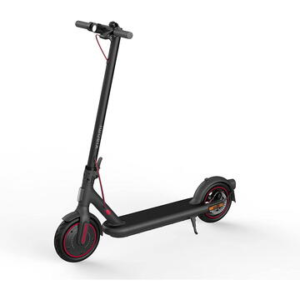  | |
| Price | |
| Our Rating | |
| Brand | XiaomiHiboy |
| Category | Electric ScootersElectric Scooters |
General
| Model The Model specifies the exact version or name of the scooter. It helps identify its unique design, features, and specifications within the manufacturer’s product line. Knowing the model makes it easier to compare options, find compatible accessories, or look up support information. | Electric Scooter 4 ProS2 Pro |
| Brand The Brand identifies the manufacturer or company that designs and produces the scooter. A trusted brand is a sign of quality, reliability, and good customer support. Well-known brands often have higher standards for safety, performance, and after-sales service, giving you more confidence in your purchase. | XiaomiHiboy |
| Release Date The Release Date indicates when the scooter model was officially launched on the market. This helps you know how current the design, technology, and features are. A newer release date often means updated components, improved performance, and the latest safety or smart features. | 01 January 202301 January 2024 |
| Recommended Age Recommended Age indicates the minimum age range that the scooter is designed for, based on safety, size, and ease of use. Following the recommended age helps ensure that riders can handle the scooter’s speed, weight, and controls comfortably and safely. Always check local laws and use protective gear, especially for younger riders. | 16+ years16+ years |
Performance & Power
| Motor Power (Wattage) What it means: The motor power, measured in watts (W), shows how strong the scooter’s electric motor is. Why it matters: Higher wattage usually means better acceleration, more torque, and improved performance on hills or rough terrain. For example, a 250W motor is good for flat city roads and light riders, while a 500W or 1000W motor provides more power for faster speeds or climbing steep inclines. | 350 W rated, up to 700 W peak350 W rated, up to 500 W peak |
| Top Speed The Top Speed indicates the maximum speed that the scooter can reach under optimal conditions. It’s usually measured on level ground with a fully charged battery and an average rider weight. A higher top speed allows you to travel longer distances faster, but always ensure you ride within legal speed limits and your personal comfort zone for safety. | 25 km/h; Pedestrian mode: 6 km/h, Normal: 20 km/h, Sport: 25 km/h30–31 km/h (19 mph) |
| Battery Capacity Battery Capacity refers to the total amount of energy the scooter’s battery can store, usually measured in ampere-hours (Ah) or watt-hours (Wh). A higher battery capacity means you can ride longer distances on a single charge, reducing the need for frequent recharging. Keep in mind that actual range can vary depending on rider weight, terrain, speed, and weather conditions. | 446 Wh (12,400 mAh)416 Wh (36 V, 11.6 Ah) |
| Estimated Range per Charge The Estimated Range per Charge indicates the average distance the scooter can travel on a single full battery charge. This range is calculated under optimal conditions, such as flat terrain, moderate speed, and average rider weight. Real-world range may vary depending on riding style, terrain, weather, and load. A longer range means fewer recharges and greater freedom for longer trips. | Up to 55 km claimed; real-world closer to 45–55 kmUp to 40 km (25 mi) claimed; ~40–42 km real-world under moderate use |
| Hill Climb Ability Hill Climb Ability describes the maximum incline or slope that the scooter can handle while maintaining stable performance. It’s typically expressed as a percentage or in degrees. A higher hill climb rating means the scooter can tackle steeper hills without losing too much speed or power. Actual climbing performance may vary based on rider weight, battery charge, and terrain conditions. | Up to 20% inclineUp to 15° (~20% incline) |
| Drive System The Drive System refers to how power from the motor is delivered to the wheels. Electric scooters typically use either a hub motor (directly integrated into the wheel) or a chain/belt drive system. A high-quality drive system ensures smooth acceleration, efficient power transfer, and low maintenance. The choice of drive system affects performance, noise level, and overall ride experience. | Rear-wheel drive (direct)Rear-wheel hub motor |
Charging & Electrical
| Charging Time Charging Time indicates how long it takes to fully recharge the scooter’s battery from empty to 100% using the standard charger provided. Faster charging means less downtime and more time on the road. Actual charging time may vary slightly depending on battery capacity, charger output, and environmental conditions. | Approximately 8–9 hours4–6 hours |
| Battery Type Battery Type refers to the specific technology used in the scooter’s battery, which affects performance, lifespan, weight, and charging time. Most modern electric scooters use high-quality lithium-ion (Li-ion) batteries because they offer a good balance of energy density, durability, and low maintenance. A reliable battery type ensures consistent power delivery and longer riding ranges. | Lithium-ion with 5th-gen Smart BMS (six protections)Lithium-ion with Smart BMS protection |
| Removable Battery A Removable Battery means the battery pack can be easily detached from the scooter for convenient charging and replacement. This feature allows you to charge the battery separately, swap it with a spare for extended range, or securely store it indoors in extreme weather. Removable batteries add flexibility and make it easier to keep your scooter powered up wherever you are. | NoNo |
| Regenerative Braking Regenerative Braking is an energy-saving feature that converts some of the energy normally lost during braking back into battery power. When you slow down or brake, the motor works in reverse to generate electricity, which helps extend the scooter’s range and improves overall efficiency. This system also reduces wear on traditional brake components, leading to lower maintenance over time. | YesYes |
| Lighting Lighting refers to the built-in front and rear lights that enhance visibility and safety when riding in low-light conditions or at night. Good lighting helps you see the road ahead and ensures that other road users can see you. Many scooters include LED headlights, taillights, and sometimes brake lights or side reflectors for added safety and compliance with local traffic regulations. | 2.5 W ultra-bright front LED headlight, upgraded tail light with brake and reflector, side reflectorsFront LED headlight, side accent lights, rear LED brake light; app-controlled |
Build & Dimensions
| Scooter Weight Scooter Weight refers to the total weight of the scooter when fully assembled, including the battery. This affects how easy it is to carry, lift, and store the scooter when not in use. A lighter scooter is more portable and convenient for commuting, especially if you need to carry it upstairs or onto public transport. Keep in mind that a sturdy frame and quality components may add to the weight but also contribute to better durability and ride stability. | ~17.4 kg (38 lb)~16.5 kg (36 lb) |
| Maximum Rider Weight Maximum Rider Weight indicates the highest rider weight that the scooter is designed to safely support while maintaining optimal performance and stability. Staying within this limit helps ensure reliable acceleration, braking, and climbing ability, and it protects the frame, suspension, and motor from excessive strain. Exceeding the recommended limit may reduce performance and increase wear on components. | 120 kg100 kg (220 lb) |
| Deck Size Deck Size refers to the dimensions of the scooter’s standing platform. A wider and longer deck provides more foot space, allowing you to stand comfortably and adjust your stance while riding. A well-sized deck improves balance and stability, especially on longer rides or at higher speeds. Compact decks, on the other hand, help keep the scooter lightweight and portable. | Wider deck, ~19 mm wider than standard 4Standard non-slip platform |
| Handlebar Height Handlebar Height refers to the distance from the deck to the handlebars, which affects your riding posture and comfort. An appropriate handlebar height helps you maintain good balance, reduces strain on your back and arms, and makes steering more comfortable. Some scooters have adjustable handlebars to fit riders of different heights, while others have a fixed height for a streamlined design. | Extended, ~54 mm wider than standard 4Fixed |
| Folding Mechanism The Folding Mechanism describes how easily and securely the scooter can be folded for carrying and storage. A well-designed folding system lets you quickly collapse the scooter into a compact size, making it convenient to transport on public transit, store under a desk, or fit into a car trunk. Look for sturdy latches and safety locks to ensure the scooter stays firmly in place when folded or unfolded. | YesYes |
| Dimensions Folded Dimensions indicate the size of the scooter when it’s fully folded. This measurement shows how much space the scooter will take up when stored or carried, making it easier to check if it will fit in your car trunk, under a desk, or in a closet. Compact folded dimensions are ideal for commuters who need to bring their scooter on public transport or store it in tight spaces. | Compact for easy storageApprox. 116 × 42 × 49 cm (45.6 × 16.5 × 19.3 in) |
| Material Material refers to the primary construction materials used for the scooter’s frame and key components. High-quality materials like aircraft-grade aluminum, reinforced steel, or durable composites provide strength, stability, and a lighter overall weight. A sturdy material ensures the scooter can handle daily wear and tear while maintaining safety and performance. | Aerospace-grade aluminum alloyAluminum alloy frame |
Safety & Control
| Brake Type(s) Brake Type(s) describe the braking systems the scooter uses to help you slow down or stop safely. Common brake types include mechanical brakes (like drum or disc brakes), electronic brakes, and foot brakes. Many scooters combine multiple braking systems for added safety and shorter stopping distances. The type and quality of brakes affect your control, especially when riding at higher speeds or on slopes. | Front E-ABS regenerative, Rear 130 mm disc brakeFront regenerative brake and rear mechanical disc brake |
| Suspension Suspension refers to the system that absorbs shocks and vibrations while riding, providing a smoother and more comfortable ride over uneven or rough surfaces. Scooters may have front suspension, rear suspension, or dual suspension for better shock absorption and stability. Good suspension helps reduce rider fatigue and improves control, especially when riding on bumpy roads or off-road paths. | None; relies on 10″ tubeless self-sealing DuraGel tiresDual rear spring suspension |
| Tire Type Tire Type refers to the kind of tires the scooter uses, which directly affects ride comfort, traction, and maintenance. Common types include solid (airless) tires, pneumatic (air-filled) tires, or hybrid options. Pneumatic tires offer better shock absorption and a smoother ride on rough surfaces, while solid tires are puncture-proof and require less upkeep. The right tire type helps ensure safe handling and a comfortable ride in different conditions. | 10″ tubeless DuraGel (self-sealing)10″ honeycomb solid tires (puncture-proof) |
| Tire Size Tire Size indicates the diameter and width of the scooter’s tires, which affect ride comfort, stability, and how well the scooter handles different terrains. Larger tires generally offer better shock absorption and a smoother ride over bumps and rough surfaces, while smaller tires keep the scooter lighter and more portable. Choosing the right tire size helps ensure a balance between agility and comfort. | 10″ (front & rear)10″ (front & rear) |
| Kickstand The Kickstand is a built-in stand that allows you to park your scooter upright when it’s not in use. A sturdy kickstand keeps the scooter stable and prevents it from tipping over, protecting it from scratches and damage. It also makes storing and accessing your scooter more convenient, whether you’re at home, work, or on the go. | YesYes |
| Water Resistance Rating Water Resistance Rating indicates how well the scooter is protected against water and moisture, usually shown as an IP (Ingress Protection) rating. This rating helps you understand whether the scooter can handle light rain, splashes, or wet roads without damage. While most scooters are not fully waterproof, a good water resistance rating adds peace of mind when riding in changing weather conditions. Always avoid deep puddles or submerging the scooter to protect its electrical components. | IPX4IP54 |
Features & Extras
| Display/Console The Display (or Console) shows important real-time information about your ride, helping you monitor your scooter’s status at a glance. Typical displays show speed, battery level, distance traveled, and riding mode. Some models also include additional features like Bluetooth connectivity, app integration, or backlighting for better visibility at night. A clear and easy-to-read display enhances safety and convenience on every trip. | LED dashboard showing speed, mode, battery, lock status, etc.LED dashboard showing speed, mode, and battery status |
| Ride Modes Ride Modes refer to the different speed and power settings you can choose to match your riding style or road conditions. Common modes include eco for maximum range and energy efficiency, standard for everyday balance, and sport or turbo for higher speed and stronger acceleration. Switching between ride modes allows you to customize performance, conserve battery, and ride safely in various environments. | Pedestrian, Normal, Sport; switch via double-tap power buttonTwo selectable speed modes; cruise control via app |
| Smart App Connectivity Smart App Connectivity lets you pair your scooter with a dedicated mobile app via Bluetooth. Using the app, you can monitor real-time ride stats like speed, battery level, and range, adjust settings such as ride modes or cruise control, lock the scooter for added security, and sometimes receive firmware updates. This feature adds convenience and allows you to personalize your riding experience right from your smartphone. | YesYes |
| Anti-Theft System The Anti-Theft System helps protect your scooter from unauthorized use or theft. This feature can include built-in alarms, electronic motor locks, GPS tracking, or remote locking through a mobile app. A good anti-theft system provides peace of mind when parking your scooter in public spaces, adding an extra layer of security to safeguard your investment. | Motor lock via App + unique hardware binding (UL IoT Gold)App-based motor lock |
| Cruise Control Cruise Control allows you to maintain a steady speed without continuously holding the throttle. This feature makes longer rides more comfortable by reducing hand fatigue and providing a smoother, more relaxed riding experience — especially on flat, open roads or bike lanes. For safety, cruise control can usually be easily activated or deactivated while riding. | YesYes |
| Accessories Included Accessories Included lists the additional items that come with the scooter to enhance your riding experience and convenience. Common accessories may include a charger, kickstand, bell, lights, phone holder, or carrying strap. These extras add value by making your scooter safer, easier to use, and ready to ride straight out of the box. | Charger (magnetic port), Allen key, reflectors, manualCharger, tools, user manual |
Warranty & Compliance
| Warranty Period The Warranty Period indicates how long the manufacturer guarantees the scooter against defects in materials and workmanship under normal use. A good warranty provides peace of mind, showing the brand’s confidence in its product quality. Always check what parts are covered, such as the frame, battery, and motor, and follow the maintenance guidelines to keep your warranty valid. | 12–24 months (varies by region)12 months (varies by region) |
| Certifications Certifications confirm that the scooter meets specific safety, quality, and environmental standards set by recognized organizations or regulatory bodies. Common certifications may include CE, RoHS, UL, or other local compliance marks, depending on your region. These certifications ensure that the scooter is manufactured to high standards and is safe and legal to use in your country. | CE, UL IoT Security Rating Gold, IPX4, TÜV-certified speed mode safetyIPX5/IPX6, CE (presumed standard Xiaomi certifications) |
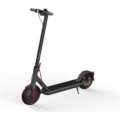  |



